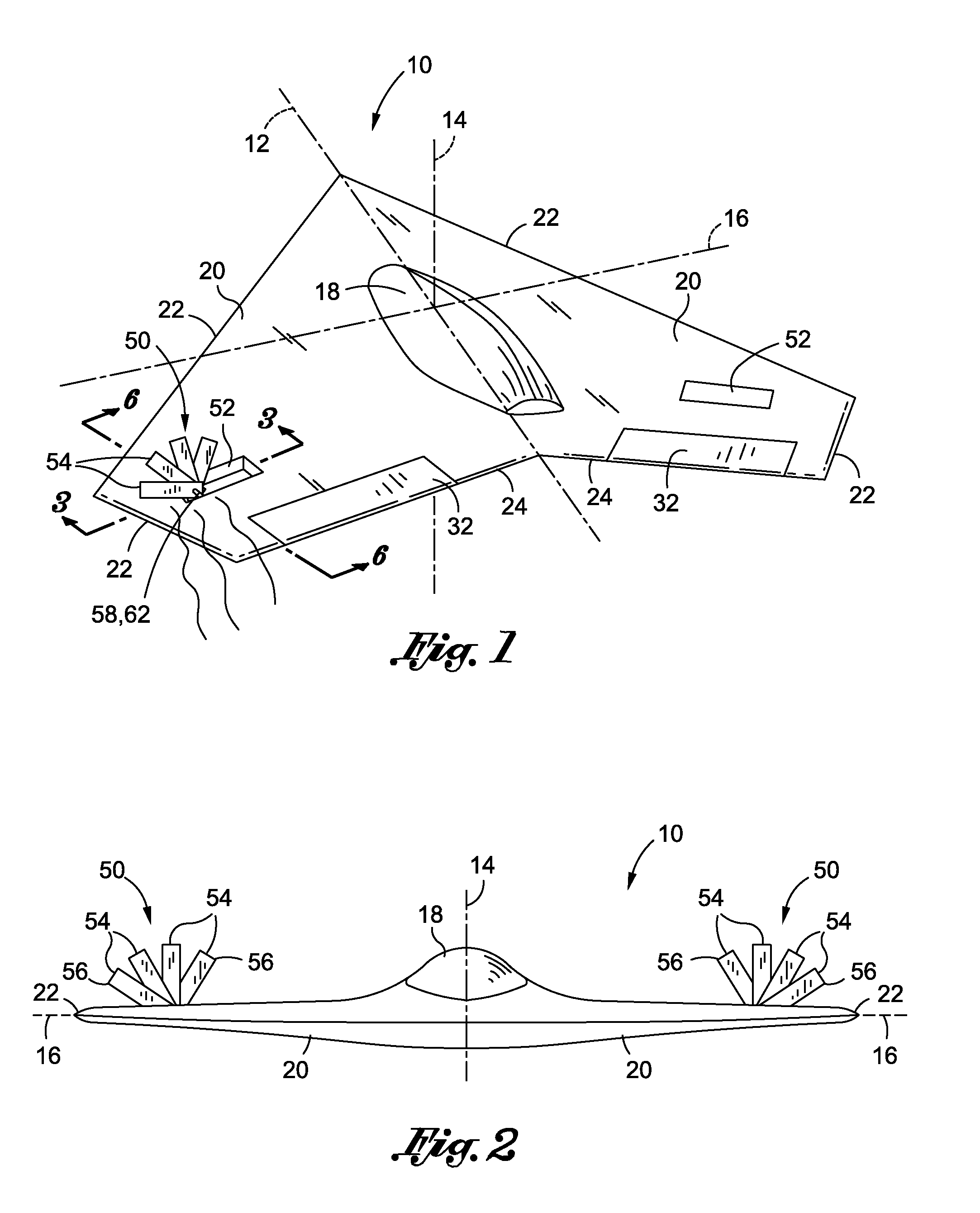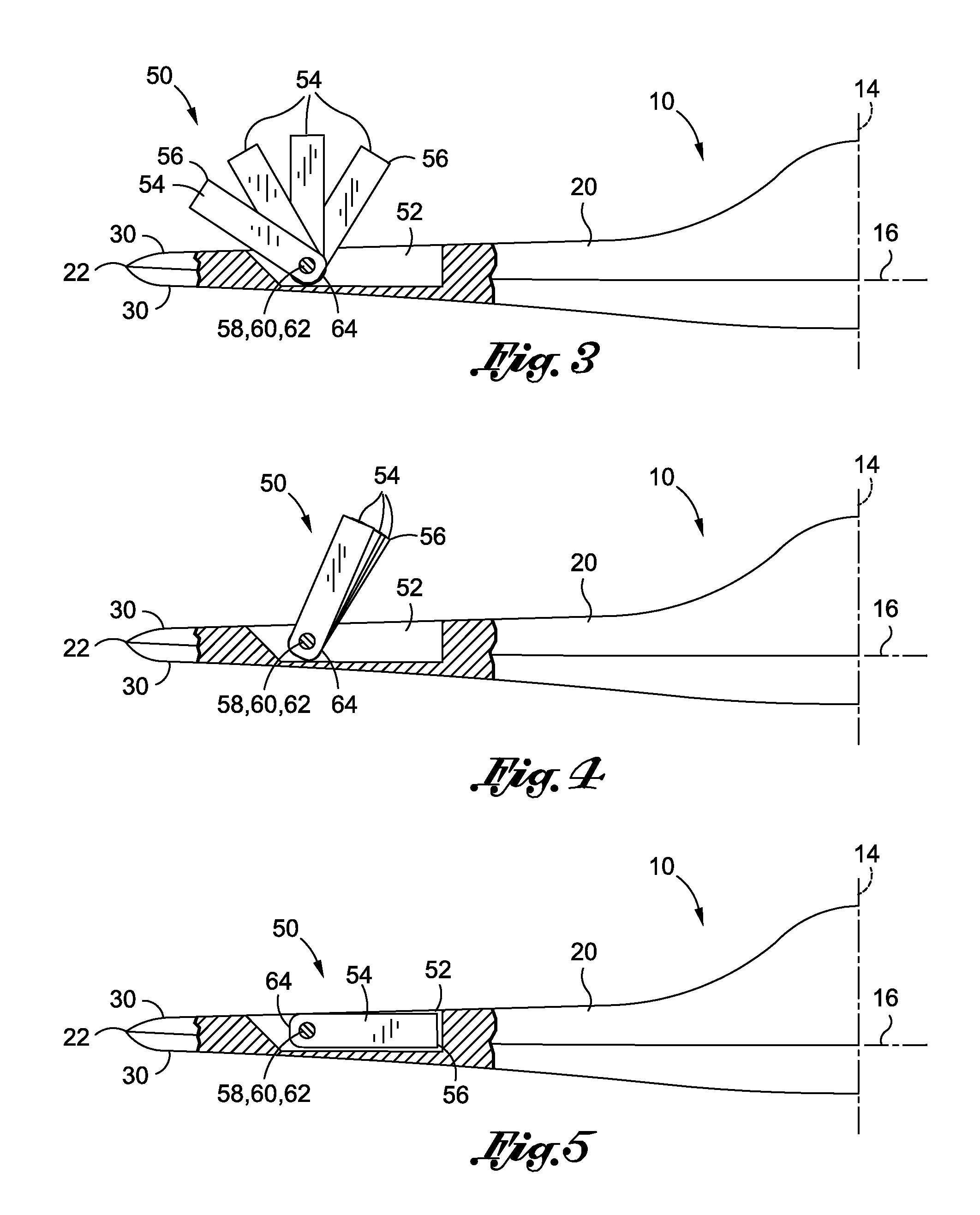As is suggested by the name, tailless aircraft lack certain control surface arrangements typical of conventional aircraft such as aft-
fuselage mounted
tail sections for carrying a conventional
elevator and / or stabilizer or a conventional tail fin and
rudder.
Although the employment of spoilers and other devices has been effective in providing
yaw control on tailless aircraft, the use of such devices presents certain drawbacks and deficiencies which detract from their overall utility for
yaw control.
As such, the actuating mechanisms for spoilers and spliterons themselves must be capable of applying the relatively large deployment forces and are therefore typically large, bulky, complex, and heavy.
In addition, such actuating mechanisms may consume large amounts of energy for deployment of the control surfaces at certain flight conditions.
A further drawback associated with spliterons is related to the relatively thin cross-sectional profile at the
trailing edge of the wing where spliterons are typically located.
Because of the relatively thin profile, packaging of the actuating mechanism for the spliteron presents design challenges.
The use of spoilers presents other inherent drawbacks.
For example, for spoilers that are mounted at a mid-chord position on the wing, the deployed
spoiler may generate a disruption or separation in the
airflow passing over the wing.
In this regard, spoilers may produce significant interference with flaps, ailerons and other downstream control surfaces due to the creation of separated flow in their wake.
In addition, the separated flow produced by the
spoiler diminishes the downstream control surface effectiveness and, furthermore, may result in an increase in buffet loads on the aircraft.
As a result, tailless aircraft which employ spoilers for
yaw control may require
trailing edge devices having increased surface area as compensation for their reduced effectiveness in the wake of the deployed
spoiler.
Unfortunately, an increase in the surface area of the
trailing edge device correlates to an increase in
mass which, in turn, translates to an increase in the structural loads that are imposed upon the
airframe.
Unfortunately, arranging the propulsion
system to provide the aircraft with
yaw control imposes several inherent drawbacks.
As such, in the event of engine failure or low engine thrust output, ineffective flight control or
yaw control may result at critical times such as during low
throttle operations typical of approaches and landings.
Furthermore, the implementation of thrust
vector control on any aircraft is typically heavy, complex and requires the use of hardware that is capable of withstanding high engine temperatures.
A further drawback associated with thrust
vector control is that some of the components may be located far aft on the aircraft such that
ballast (i.e.,
dead weight) must be added in order to maintain the vehicle's center of gravity within an acceptable range.
A further drawback associated with the use of spoilers and / or spliterons on tailless aircraft is related to the separated flow over the wing that occurs at high angles of
attack.
Although such control surfaces may be effective in imparting the necessary yaw,
pitch and / or roll control during most flight conditions, such control surfaces may lose their effectiveness due to separation of the flow over the wing at high angles of
attack.
In this regard, these control surfaces may be rendered ineffective for yaw and / or speed control during
high angle of
attack conditions.
 Login to View More
Login to View More  Login to View More
Login to View More 


